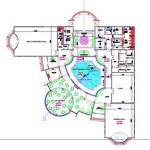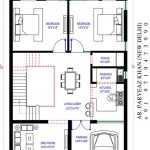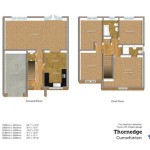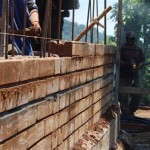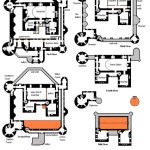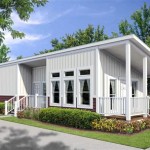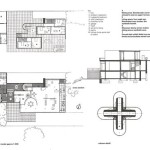Quail Cage Plans and Designs
Raising quail, whether for meat, eggs, or as ornamental birds, requires appropriate housing. A well-designed quail cage contributes significantly to the birds' health, productivity, and overall well-being. Choosing the right cage design depends on several factors, including the breed of quail, the number of birds, the available space, and the intended purpose.
Several key considerations are crucial in planning a quail cage. Adequate ventilation is essential for preventing respiratory issues and maintaining a healthy environment. The cage should provide protection from predators and harsh weather conditions. Ease of access for cleaning, feeding, and collecting eggs is also vital for efficient management. Finally, the cage materials should be durable, safe for the birds, and easy to clean.
One common design is the battery cage system. These cages are typically constructed from wire mesh and arranged in tiers, maximizing space utilization, particularly for commercial quail farming. Battery cages allow for efficient egg collection and simplified cleaning. However, they offer limited space for the birds to move and express natural behaviors.
Ground-level cages, also known as grow-out pens, provide more space for movement compared to battery cages. These cages are often built with wire mesh sides and a solid bottom, allowing for easier cleaning. They are suitable for raising quail for meat or breeding purposes, as they allow for more natural social interactions. However, ground-level cages require more floor space compared to tiered systems.
Suspended cages offer a compromise between battery cages and ground-level pens. These cages are raised off the ground, providing good ventilation and protection from predators while also allowing for relatively easy cleaning. Suspended cages can be designed with multiple tiers to maximize space efficiency and are often used for breeding or egg production.
When choosing a quail cage design, the size of the cage is a critical factor. Overcrowding can lead to stress, aggression, and disease transmission among the birds. Therefore, providing sufficient space per bird is essential for maintaining their health and productivity. The recommended space per bird varies depending on the breed and age of the quail.
The choice of materials for constructing a quail cage also impacts its durability and functionality. Galvanized wire mesh is a popular choice due to its corrosion resistance and durability. Wood can be used for framing and support structures, but it should be treated to prevent rotting and pest infestations. Plastic can also be used for certain components, such as feeders and waterers.
Several readily available quail cage plans cater to different needs and skill levels. Simple DIY plans using readily available materials like PVC pipes and wire mesh can be found online and in various publications. These plans are ideal for beginners and those on a budget. More elaborate plans incorporating automated feeding and watering systems are also available for those seeking a more advanced setup.
Constructing a quail cage requires careful planning and execution. Accurate measurements and precise cutting are crucial for ensuring the structural integrity of the cage. Proper assembly of the wire mesh and framing components is essential for preventing escapes and ensuring the safety of the birds. Following detailed instructions and using appropriate tools will contribute to a successful construction process.
Beyond the basic structure, several additional features can enhance the functionality and efficiency of a quail cage. Providing separate compartments for nesting and brooding can improve breeding success. Including perches allows the birds to exercise and exhibit more natural behaviors. Installing a removable dropping tray simplifies cleaning and improves hygiene. Adding a cover to the cage provides protection from the elements and reduces drafts.
Regular maintenance is essential for ensuring the longevity of the quail cage and the health of the birds. Cleaning the cage regularly removes droppings and uneaten food, preventing the buildup of bacteria and parasites. Inspecting the cage for damage and repairing any broken or worn components ensures the safety and security of the birds. Regularly disinfecting the cage helps to prevent the spread of diseases.
Choosing the right quail cage design is a crucial step in successfully raising these birds. Considering factors like the intended purpose, available space, and the number of birds will guide the selection process. Proper construction, regular maintenance, and attention to detail will contribute to a healthy and productive quail flock.
Different breeds of quail have varying space requirements. Larger breeds, such as Jumbo Coturnix, require more space per bird compared to smaller breeds like the Button Quail. Researching the specific needs of the chosen breed will help determine the appropriate cage dimensions.
Climate considerations are also important when designing a quail cage. In colder climates, providing insulation and a heat source may be necessary to protect the birds from extreme temperatures. In hot climates, ensuring adequate ventilation and shade is essential to prevent heat stress.
The availability of resources, such as building materials and tools, also influences the choice of quail cage design. Utilizing locally available materials can reduce costs and simplify the construction process. Choosing a design that aligns with available skill levels and tools ensures a successful and efficient build.

Quail Cage Design And Plan Coop Raising

Quail Cage Design And Plan Coop Raising

Quail Cage Design And Plan Ens Backyard En Coops

Quail Cage Build Made Easy Simply Homestead

Wexford Quail In Eggs Meat Few Words About Cage Coop House Building A En

Quail Cage Build Made Easy Simply Homestead

Quail Cage For With Great S High Quality Breeding Cages

Diy 3 Layered Quail Cage Building A New Layer With Superb Design Raising Tips

Free Quail Cage Plans Ens Backyard Pen Coop

How To Build A Quail Habitat With Pictures Wikihow

